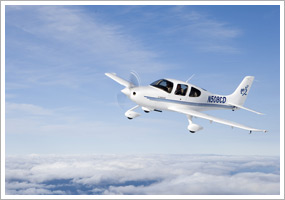| The following stories from the Dec. 02, 2011, edition of AOPA ePilot were provided to AOPA members who expressed an interest in the particular subject areas. Any AOPA member can receive information tailored to their areas of interest by updating their preferences online |
training tipsWhat’s ‘special VFR’? To appreciate the hazards that these rules address, it is a good idea to experience marginal VFR conditions safely on some dual instructional flights—perhaps at the stage of training when you take on the tasks associated with basic instrument maneuvers in the Private Pilot Practical Test Standards. That’s a set of skills you learn for the sole reason of being able to control your aircraft without visual references in the event of an unintended encounter with instrument meteorological conditions. (Continued flight into instrument conditions by noninstrument-rated pilots is a persistent cause of serious accidents.) For every rule, some commonsense exceptions apply, depending on a pilot’s level of certification. Sometimes a flight is ready to depart VFR from Class B, C, D, or E airspace in good en route weather, but must wait until conditions at the departure airport are reported to be above basic VFR minimums. Or, an arriving VFR flight may face deteriorating conditions, such as a coastal airport where a sea breeze has begun to transport a fog bank or low cloud deck onshore. Both are examples of circumstances when a special VFR (SVFR) clearance may be requested and approved under FAR 91.157, permitting an arrival or departure with visibility of at least one statute mile and clear of clouds (different visibility rules apply for helicopters). When you are quizzed on the topic, remember to note that a student pilot is not allowed to operate on an SVFR clearance. “Student pilots are not permitted to request SVFR on solo flights, and SVFR is not allowed in most Class B airspace. SVFR is not permitted at night unless the pilot is instrument-rated and the aircraft properly equipped for instrument flight,” explains the Air Safety Institute’s online discussion of the rule titled “How safe is special VFR?” Your ground review of the SVFR clearance with your instructor also provides a good opportunity to review and update your solo endorsements, and make any needed adjustments to the limitations for solo flying that he or she has noted in your logbook as appropriate for your training needs and changing level of experience. training productsVFR MagnaPlotter from PilotMall.comFor the pilot who wants double-duty from every tool he or she uses, here’s the VFR MagnaPlotter. Not only does it include a sectional and a WAC scale in statute and nautical miles, but it also serves as a magnifier for charts or other printed material. The clear plastic plotter is about the size of a bookmark. It sells for $3.99. Order online.
Note: Products listed have not been evaluated by ePilot editors unless otherwise noted. AOPA assumes no responsibility for products or services listed or for claims or actions by manufacturers or vendors. final exam
Question: This is my first year flying in cold weather. How much frost on the wings is considered hazardous?
Answer: In short, any amount is too much. It is a serious hazard to flight and should be treated with care. Even a small amount of frost on the wings can prevent an aircraft from becoming airborne at normal takeoff speed. Also, if an aircraft does manage to get in the air, there might be insufficient airspeed above the stall speed so that a moderate gust or turning flight could lead to a stall. Frost does not change the aerodynamic shape of the wing, but it does impede the smooth flow of air over the wing causing early airflow separation and ultimately resulting in a loss of lift. For more information on the subject, check out the Air Safety Institute’s Safety Brief about wing contamination.
Got a question for our technical services staff? E-mail [email protected] or call the Pilot Information Center, 800/872-2672. Don’t forget the online archive of “Final Exam” questions and answers, searchable by keyword or topic. |
 For reasons that are both obvious and sound, student pilots must abide by stricter limits than certificated pilots when it comes to operating an aircraft solo in the presence of clouds or in reduced-visibility conditions.
For reasons that are both obvious and sound, student pilots must abide by stricter limits than certificated pilots when it comes to operating an aircraft solo in the presence of clouds or in reduced-visibility conditions.

